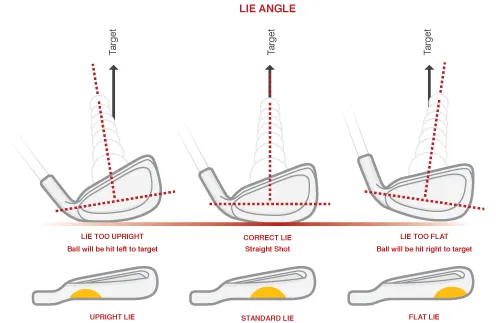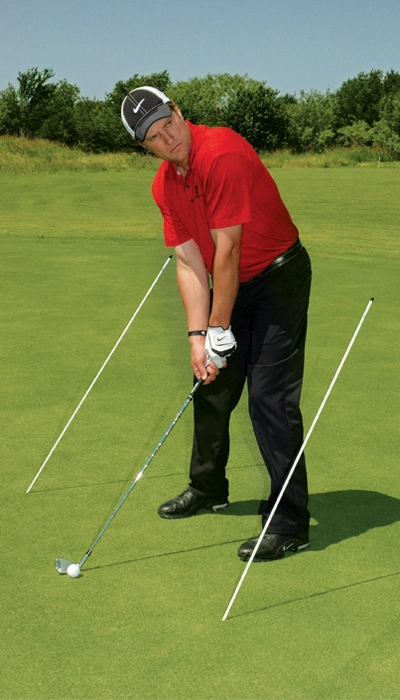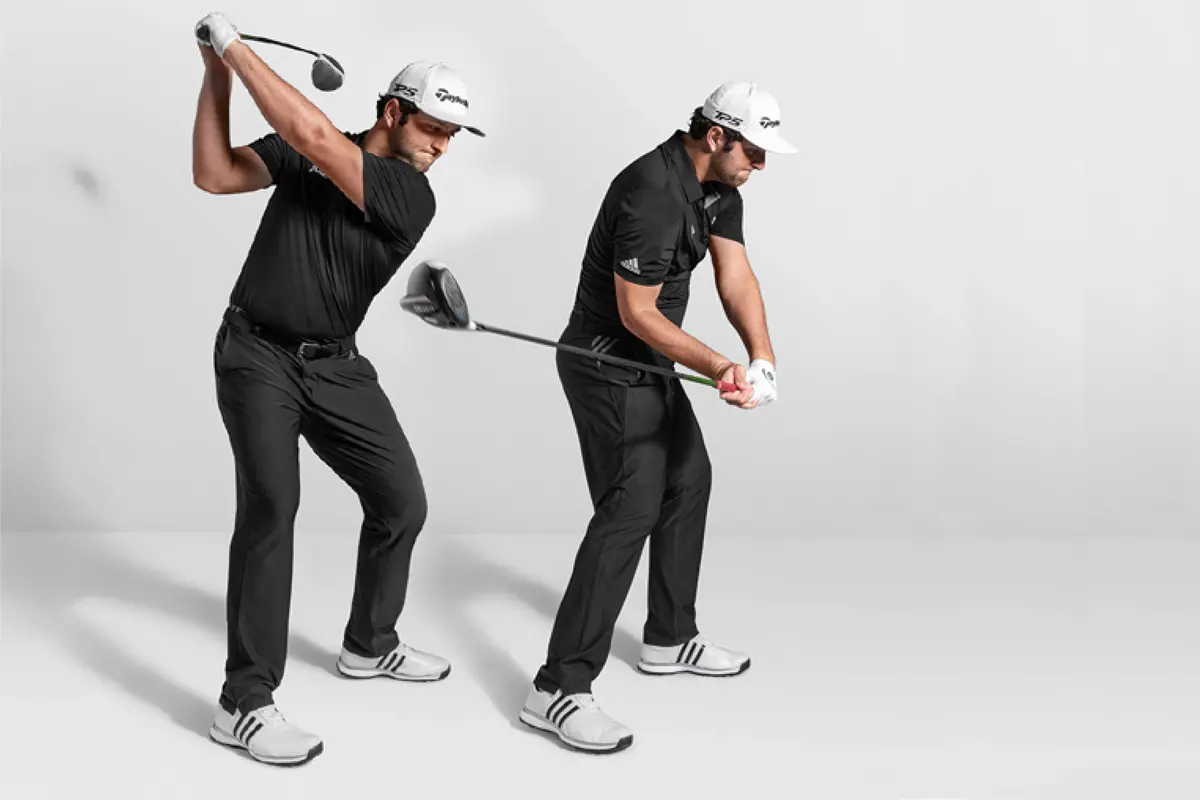Content Summary
Are you looking for ways to improve your golf technique? Confused about the golf swing plane? This article has the answers! You'll soon know how to get that perfect golf shot every time.
We're discussing the right set-up, and the different planes in a golf swing. Get ready to take your game to the next level!
Facts: Golf Swing Plane
Top 5 Crazy Facts, Statistics and Trends Related to Golf Swing Plane:
- According to Golf Digest, only 10% of golfers consistently strike the ball flush and on the correct swing plane.
- Research by GolfTEC showed that the vast majority of amateur golfers tend to swing too steeply, with an angle of attack that is too steep, leading to poor ball striking and inconsistent shots.
- PGA Tour players, on average, swing on a shallower plane and with less deviation from top to bottom of the swing than amateur players, according to data from TrackMan.
- A study by GolfWRX found that 78% of golfers who worked on improving their swing plane saw a significant reduction in their handicap.
- Using a golf swing plane trainer can lead to significant improvements in swing consistency and ball striking, according to Golf.com.
Sources: Golf Digest, GolfTEC, TrackMan, GolfWRX, Golf.com.
Introduction
Golf Swing Plane is a must-know for any golfer but it can be confusing and tricky to master. Are you a new golfer or having trouble with your swing? If so, you may be struggling to get a consistent result. Don't worry! This article will tell you all you need to know about golf swing planes.
We'll discuss what they are, why they are so important and how to improve your swing. Whether you're experienced or a beginner, you'll find tips to help you improve your golf game:
- What are golf swing planes?
- Why are they important?
- How to improve your swing?
The Importance of Golf Swing Plane
Golf Swing Plane: Essential for Consistency & Accuracy
The golf swing plane is key to achieving shot consistency, accuracy, and distance. It's the path the club head takes when hitting a golf ball. To create a proper golf swing plane, the club must be swung on the proper plane to generate the desired ball flight with less side-spin.
Many golfers have difficulty with the swing plane concept. This can lead to fat shots, thin shots, and inefficient swings. To maintain efficiency, the club head must stay on a consistent plane throughout the swing. This includes proper takeaway, lie angle, alignment, and great backswing and downswing positions.
Downswing planes can be tricky. Too steep an angle can create a divot behind the ball and cause fat shots. Too shallow an angle can cause the club head to top the ball and cause mishits flying in all directions. Great ball strikers like Tiger Woods or Ben Hogan have/had great swing planes. They kept their arms and body rotation moving to hit the ball with the clubface square to the target.
Improving your swing plane requires practice, proper body alignment, and visualization. Try swing plane drills and video analysis. This will help you practice your path and hit the right angles, giving you more power and distance in the game.
Understanding Golf Swing Plane
Budding golfers, if you're having trouble with hitting consistent shots, don't worry. You're not alone. Mastering the golf swing plane is a fundamental challenge.
The golf swing plane is the path the clubhead takes during a swing. Straying from the correct swing path can lead to mishits, less distance, and accuracy issues.
Understanding the golf swing plane is key for improving your game, reducing handicap, and increasing your enjoyment in the game of golf.
Here we'll explore the main elements of the golf swing plane. We'll discuss what it is, what affects it, and tips for improving your swing trajectory.
Definition of Swing Plane
The swing plane is a key concept in golf. It's an imaginary line that the club head follows as it goes through it's path to the ball from backswing to downswing. Swinging on plane means the club head path matches the swing plane – leading to better efficiency and hitting shots with the sweet spot of the clubhead.
There are two types of swing planes – two-plane and one-plane. Two-plane has a steeper backswing plane, and a shallow downswing plane. One-plane keeps the club head on one plane all the way through the swing.
To get the right swing plane, golfers must look at their club's lie angle and their own backswing plane and shaft plane. A flat back swing plane can lead to a low ball flight and a steep angle can mean inconsistent shots. So, a shallow angle can help hit higher trajectory shots.
Other factors that can affect the golf shot are: upper body rotation, the club face's position at impact, and the position of the golfer's back foot.
Golf instructors say the bottom part of the swing is the most important. Pros like Jack Nicklaus and Tiger Woods recommend starting the bottom portion of the swing taking the club head straight back.
Pro tip: Get your club head on the right path during the backswing and downswing. Pay attention to your club's lie angle, backswing plane, and shaft plane. Visualize your club face swinging along the imaginary line from the ball to the target.
Ideal Swing Plane and Lie Angle
Achieving the ideal swing plane and lie angle is vital for a golfer's efficiency and shot accuracy. Most players struggle to keep their swing on plane, which is the path their club takes through the back and forward motion of the swing. There are two types of swing planes: one-plane and two-plane.
Two-plane has a steeper backswing and flatter downswing. One-plane has a shallower backswing and more upright downswing. Both can be effective, depending on the golfer.
Lie angle is also important. It affects how the golfer positions the club in relation to the ball. A club with a lie angle that is high will cause a golfer to stand closer to the ball while one with a lower lie angle will cause him/her to stand further from the ball. Therefore, the swing using a high angle lie will be steeper than one with a low lie angle.
To better understand your own swing plane and lie angle, consult a golf instructor or club fitter. They will help you find the best equipment and swing mechanics for your game.
Changes in Swing Plane during Swing
Golf swings involve a crucial path for the club head to travel. This path may vary throughout the swing and be affected by factors such as club choice and swing style.
If vertical angle of the swing is too flat, it can lead to pulling, hooking, or hitting the ball with the sole of the club. Too steep and it will cause slicing, pushing the ball and hitting fat shots.
Hogan's Pane of Glass concept helps illustrate the swing plane.
Importance of Being on Plane
Impact of Swing Plane on Shot Consistency and Accuracy
Golf is a game of precision and consistency. To make this happen, most golfers first must be on plane with their golf swing. Here we look at the effect of the swing plane on shot accuracy and consistency. Thus, understanding this concept is important for improving one's golf game.
Swing plane is an imaginary line (see Hogan's Pane of Glass above) that the golf club travels on while doing a swing. You can also visualize it by thinking of a sparkler path or a line drawn on the ground. Two types of swing planes exist: the one plane swing and the two plane swing. The one plane swing has the club in a flat plane, pivoting around one point. The two plane swing, however, has the club swinging in two planes.
To make a solid contact with the ball, the swing plane must be maintained. Moving outside this plane in the downswing or backswing can lead to a wrong approach to the ball. A too flat swing also decreases distance and accuracy.
To hit the ball well, being on the golf swing plane is key. The full swing should be done with a single motion, with the club travelling through the ball gracefully. Poor swing plane affects distance, accuracy, and consistency.
In short, being on swing plane is vital for consistent, accurate shots. With proper technique and practice, maintaining the swing plane can be achieved.
Tip: Using video analysis during practice can help golfers view their swing plane and work on improving it.
Impact of Off-Plane Swing on Shots
Off-plane swing is when the golf club moves away from the desired swing plane, resulting in bad shots and less distance. This impact can be great, causing missed shots, decreased accuracy and lower distance.
If the club head travels in a loop rather than straight line it can cause a slice, hook or other off-target shots. Power is also reduced slightly, meaning less overall distance.
Pro Tip: To prevent off-plane swinging issues, make sure you're set-up fundamentals are correct and use a mirror or video to spot any flaws and work with an instructor to fix them.
Checkpoints for Getting On Plane
Common Mistakes in Swinging Off-Plane
- Incorrect Grip: When the grip is too tight or weak, it can cause the swing to go off-plane.
- Improper Posture: Poor posture can lead to the club swinging too far inside or outside the plane.
- Inconsistent Backswing: If the backswing is too flat or too steep, the golfer could end up off-plane.
- Incorrect Ball Position: If the ball is too far forward or back, it can affect the swing plane.
- Overactive Hands: Too much reliance on the hands can also cause the club to swing off-plane.
Filming yourself and comparing it to a pro's swing can help identify any issues. A golf instructor can be useful too! Finally, practice regularly to maintain the right form and technique.
Importance of Keeping the Club Flush to the Ground
Golf swing plane is majorly important. Keep the club flush to the ground. Don't lift it too high or dip too low. This helps achieve consistent ball striking and longer shots.
Why?
- Accuracy: Wrong movements cause mis-hiting.
- Distance: Keeping the club level leads to more speed and power.
- Consistency: Same plane for every shot.
Get a good setup – grip, stance, distance. As you start the back swing, keep the club head low. Swing away from the ball, not picking it up.
In the downswing make sure your weight is shifting correctly. Don't come over the top (steep downswing) or cast (releasing your wrists) too early.
Pro tip: Use a mirror or video camera to check your swing plane. Do this regularly to ingrain muscle memory.
Top of the Backswing Plane Checkpoint
It's all about those checkpoints! One checkpoint you must take seriously is the top of the backswing plane. The club should be parallel to the ground, pointing to the target. Here are some tips to help:
- Slow backswing, clubface square to the target line
- Left arm in line with shoulders at halfway through
- Club parallel to the ground at the top
- Keep lead wrist flat during the downswing
Follow these tips and you'll be on your way to more accurate shots and better scores!
Pro tip: Use high-quality golf balls to enhance your game. Different types of balls have different properties – choose wisely!
Drills for Getting Your Swing On Plane
Golfers have difficulty staying consistent and accurate with their swinging. This causes a lot of frustration and lowers the enjoyment of their round. The main issue is usually their swing plane.
But don't worry! There are drills created to get your swing on plane and improve your game. We'll explain these drills and give tips and tricks to help you get a smoother and more efficient swing. Let's get going!
Lie Board Drill
Do you want to improve your golf swing? Then, the Lie Board Drill technique is essential! It involves using a board to measure the angle of the clubface at impact. This allows golfers to adjust their technique and hit more accurate shots.
Hard pan is one of the best lies to practice off of to get better at hitting a golf ball. As there is very little room for error when hitting off of hard pan, bad outcomes motivate you to improve your swing faster. In our opinion the best hard pan is a lie board. It provides you with the same kind of "hard pan" feeling by hitting from a wooden board.
For a little more of a challenge set up your lie board on a soft, grassy lie. Fat shots will be accentuated because the board will go up and down on this kind of lie. On this drill, only well-hit, ball-first shots will be effective.
Benefits of the Lie Board Drill:
- Enhances accuracy
- Improves consistency
- Offers instant feedback
- Corrects bad habits
Integrating this drill into your routine will help you refine your swing plane and become better on the course.

Alignment Sticks in the Ground Drill
Alignment Sticks in the Ground Drill is a great way for golfers to enhance their swing. These sticks are long, thin and flexible. Place two of them on either side of the ball. Position them parallel to your target line and make sure they are perpendicular to your body. Align your feet, hips and shoulders with the sticks. Take your stance and swing.
This drill has lots of advantages. It builds up muscle memory and gives a visual guide for proper alignment. It also helps you get a consistent swing. It's a great part of any practice session and it's easy to set up.
Pro tip: If you don't have alignment sticks, use two golf clubs instead. Place them just like the sticks and follow the same steps.

Shoulder-Push On Plane Drill
The Shoulder-Push On Plane Drill is a highly successful exercise to refine golfers' swing technique. It involves utilizing the shoulder muscles to push the golf club on the correct plane and keeping the clubface square during impact with the ball.
To do the Shoulder-Push On Plane Drill right, it's important to stand with feet shoulder-width apart and grip the club with both hands. Position the club at the top of the swing and thrust it forward with the shoulder muscles, keeping the clubface level with the ground.
Benefits include: better posture, increased shoulder strength, and greater accuracy and distance in the swing. It's great for all golfers, from novices to experts, seeking to refine their swing.
To get the most out of the Shoulder-Push On Plane Drill, practice it regularly and incorporate it into your workout routine. Try lighter clubs first and then progress to heavier ones.
Pro Tip: Consult a golf coach or trainer before attempting the Shoulder-Push On Plane Drill to make sure proper technique and form are used.

FAQs: Golf Swing Plane
What is Golf Swing Plane?
Golf Swing Plane is the path an ideal golf club should take during the swing motion to hit the ball consistently and accurately.
Why is Golf Swing Plane crucial to master?
The Golf Swing Plane significantly impacts your accuracy, consistency, and distance. That’s why it’s crucial to master it to improve your game and lower your scores.
What are the common mistakes made while getting on the Golf Swing Plane?
Common mistakes are standing too close to the ball, being too far away from the ball, tilting your shoulders too much, or bending too much at the waist.
How to get on the Golf Swing Plane correctly?
You need to maintain the correct posture by standing close enough to the ball so that the club rests flat on the ground, keep your shoulders level to the ground, and hinge your wrists correctly.
Can a faulty Golf Swing Plane cause slicing?
Yes, slicing the golf ball is a common problem that often results from a faulty Golf Swing Plane. The club doesn't rotate as it should, resulting in an open clubface, causing the ball to go off to the right.
When should I start learning the Golf Swing Plane?
You should start learning the Golf Swing Plane as soon as you start to play golf or right now if you are already playing. Building muscle memory is crucial when it comes to getting the proper swing plane movement.
Conclusion and Takeaways
Do you love golf? Then you know the golf swing plane is super important for accurate and powerful shots. But mastering it can be hard. Many golfers have trouble keeping their swings consistent. The good news is that everyone can improve their golf swing plane and score better.
This article looked into the golf swing plane thoroughly. It will help you reach your full potential on the course. It doesn't matter if you're a beginner or an experienced player. You can use these insights to refine your technique and play better.
Thank you for visiting, and we hope to see you back soon!






